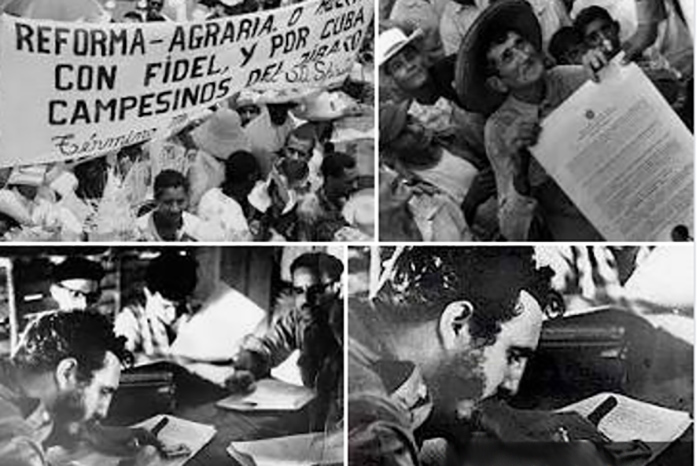
On October 3, 1963, 60 years ago, the Revolutionary Government of Cuba signed the 2nd Agrarian Reform Law to put an end to the remnants of the latifundia, by reducing land tenure to five caballerias, from the 30 stipulated by the first Law of 1959, which, in addition to radically changing the agrarian production system, dealt a definitive blow to the counterrevolution in the countryside.
When the country was beginning to be a victim of the complete establishment of the US economic, commercial and financial blockade and the most bloody terrorist, espionage and subversive plans were being applied against the young Revolution, there were still around 10 thousand landowners who controlled almost 2 million hectares and the vast majority of them were disaffected with the new reality of the nation.
In an analysis on the need for the II Agrarian Reform Law, the late historian José Cantón Navarro stated that most of these expropriated bourgeoisie in the countryside were allies of imperialism and the domestic oligarchy that "(...) began to hinder food production, to speculate with agricultural products and to use their high incomes to finance counterrevolutionary plans".
But the opposition to the Revolution on the part of this sector of landowners did not stop at sabotage. During that same year of 1963, the struggle against the counterrevolutionary rebels entered its almost fifth year at a cost of hundreds of lives of combatants and peasants murdered by the bandits, mainly in the Escambray region where these landowners were their main support.
The elimination of this important base of class support for the bandits was an important factor together with the offensive of the Rebel Army, the National Revolutionary Militias and the State Security Organs for the definitive elimination in 1965 of the bands of rebels throughout the country.
However, the expropriation was carried out in accordance with legal principles and established a compensation to all those affected, not for the total value of their properties, but one consisting of 15 pesos per month for each expropriated horse; but with the specificity that no one would receive less than 100 nor more than 250 pesos per month.
In addition, it empowered the President of the National Agrarian Reform Institute, the State agency that at that time administered land use, to exempt from the Law those producers who had maintained the production of their lands in exceptional conditions of productivity since the promulgation of the Agrarian Reform Law in 1959 and had shown full willingness to continue supporting the State's production plans.
The II Agrarian Reform Law freed the Cuban countryside forever from the remnants of the capitalist structures of exploitation and opened a new stage, which despite not being free of errors and negative tendencies, laid the foundations of important social and economic transformations that vindicated the agrarian working class, the most exploited and vilified during the colonial stage and in the pseudo-republic.
Sidebar

 Agencia Cubana de Noticias
Líder en información nacional
Agencia Cubana de Noticias
Líder en información nacional








Nos reservamos el derecho de no publicar los comentario que incumplan con las normas de este sitio